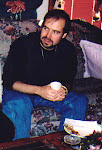I read A Killing Art, by Alex Gillis and it reiterated to me yet again that people ruin everything.
This
is the "untold history" of Tae Kwon Do, and it was fascinating. There
were jealousies, fractures, kidnap plots, and even assassination
attempts over the art of Tae Kwon Do. It turns out that even
institutions based upon moral teaching and respect suffer collateral
damage from the human condition. (You don't seem shocked.)
The
canned version of any teaching follows a linear path. Whether in the
study of WWII, civil rights, or the Revolutionary War, there is a pretty
clear narrative that has shut out all the clatter. These things settle
into well-worn grooves and coast along. Then, voila, we have "history
as we know it." Winston Churchill famously declared his intent to write
the story of the Second World War, and he did that and won a Nobel
Prize. His story now dominates school books.
The
canned version of Tae Kwon Do is pretty simple, but it varies depending
on which section a person joins. Some credit one man (Gen. Choi Hong
Hi), while other organizations (The WTF, for one) have wiped his name
clean from the story. It may not shock you to learn that petty
squabbles and claims of purity widened fissures.
Tae
Kwon Do has been a necessary addition to my life and I have enjoyed the
recalibration of mind and body. Its moral message is particularly
important. It has become a wonderful family activity and has provided a
sanctuary where stress and pressure dissolve. It has been a positive
experience all around and I cannot get enough of it. So, when I read
this book, I prepared for the worst. Will it ruin an outlook? Will it
taint a joy? The answer is a simple, "nope."
This book
really only served as just one more of the myriad examples found in life
to prove that people behave poorly in every arena. It's true. The
civil rights movements, when examined, was a mess of infighting,
jealousies, and some unfortunate acts. It was successful and advanced
our nation, and so the movement has earned its ruts and smooth, linear
storyline. Even WWII looks pretty ugly under the hood. Examples abound
in history.
The lesson, as always, is to take care
before opening the hood on any part of history. In this book, Jen and I
found the stories amusing, unfortunate, and typical all at the same
time. It did nothing to change our view of the intentions of the art,
but it illustrates the collateral damage caused by those who mean well.
Those
who meant well committed acts of espionage, kidnapping, political
corruption, threats to family, match-fixing, bribery, and more acts of
intentional shunning (sometimes comical) than I thought possible. And
it was all done in the name of a martial art. Is this unique to Tae
Kwon Do? I doubt it. After all, as the youngest martial art, its ruts
have some rough spots still. I'm sure the bodies buried in the name of
Karate or Kung Fu have become green grass by now.
So,
we move steadfastly together into the imperfect world of an art we
enjoy while leaving the noises under the hood of its history alone -
observed, but left to hum safely out of mind. It really is the only way
to fly.
Thursday, June 26, 2014
Subscribe to:
Comments (Atom)




